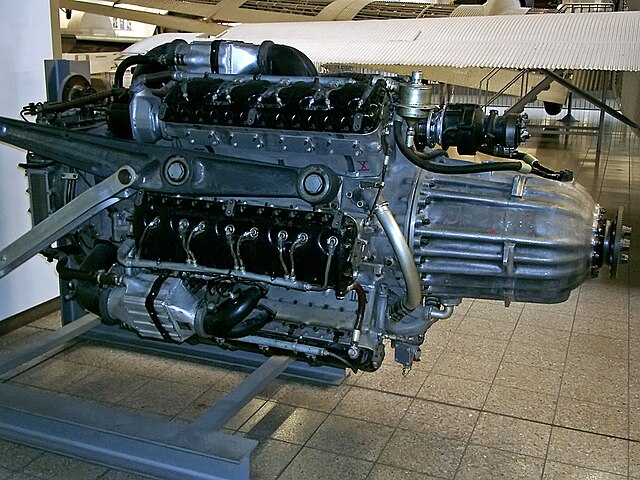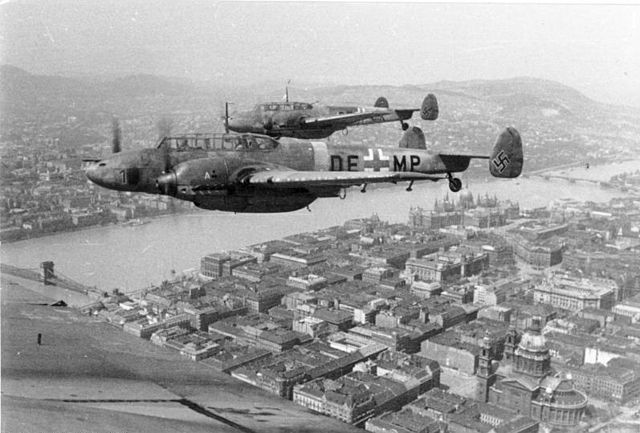The Heinkel He 219 Uhu ("Eagle-Owl") is a night fighter that served with the German Luftwaffe in the later stages of World War II. A relatively sophisticated design, the He 219 possessed a variety of innovations, including Lichtenstein SN-2 advanced VHF-band intercept radar, also used on the Ju 88G and Bf 110G night fighters. It was also the first operational military aircraft to be equipped with ejection seats and the first operational German World War II-era aircraft with tricycle landing gear. Had the Uhu been available in quantity, it might have had a significant effect on the strategic night bombing offensive of the Royal Air Force; however, only 294 of all models were built by the end of the war and these saw only limited service. Ernst-Wilhelm Modrow was the leading night fighter ace on the He 219. Modrow was credited with 33 of his 34 night air victories on the type.
Heinkel He 219
A production He 219A with Hirschgeweih VHF radar antennas
Captured He 219 in British markings in 1945. The aircraft is missing its cockpit canopy
The troublesome Jumo 222 multibank engine, meant for the He 219B and -C subtypes
The Messerschmitt Bf 110, often known unofficially as the Me 110, is a twin-engined Zerstörer, fighter-bomber, and night fighter (Nachtjäger) developed in Nazi Germany in the 1930s and used by the Luftwaffe during World War II. Hermann Göring was a proponent of the Bf 110, believing its heavy armament, speed, and range would make the Bf 110 the Luftwaffe’s premier offensive fighter. Early variants were armed with two MG FF 20 mm cannon, four 7.92 mm MG 17 machine guns, and one 7.92 mm MG 15 machine gun for defence. Development work on an improved type to replace the Bf 110 - the Messerschmitt Me 210 - began before the war started, but its shakedown troubles resulted in the Bf 110 soldiering on until the end of the war in various roles. Its intended replacements, the aforementioned Me 210 and the significantly improved Me 410 Hornisse, never fully replaced the Bf 110.
Messerschmitt Bf 110
Bf 110s in France in 1942
Bf 110s in flight above Budapest, 1944
Bf 110D-0 with an early "dachshund's belly" fuel tank








